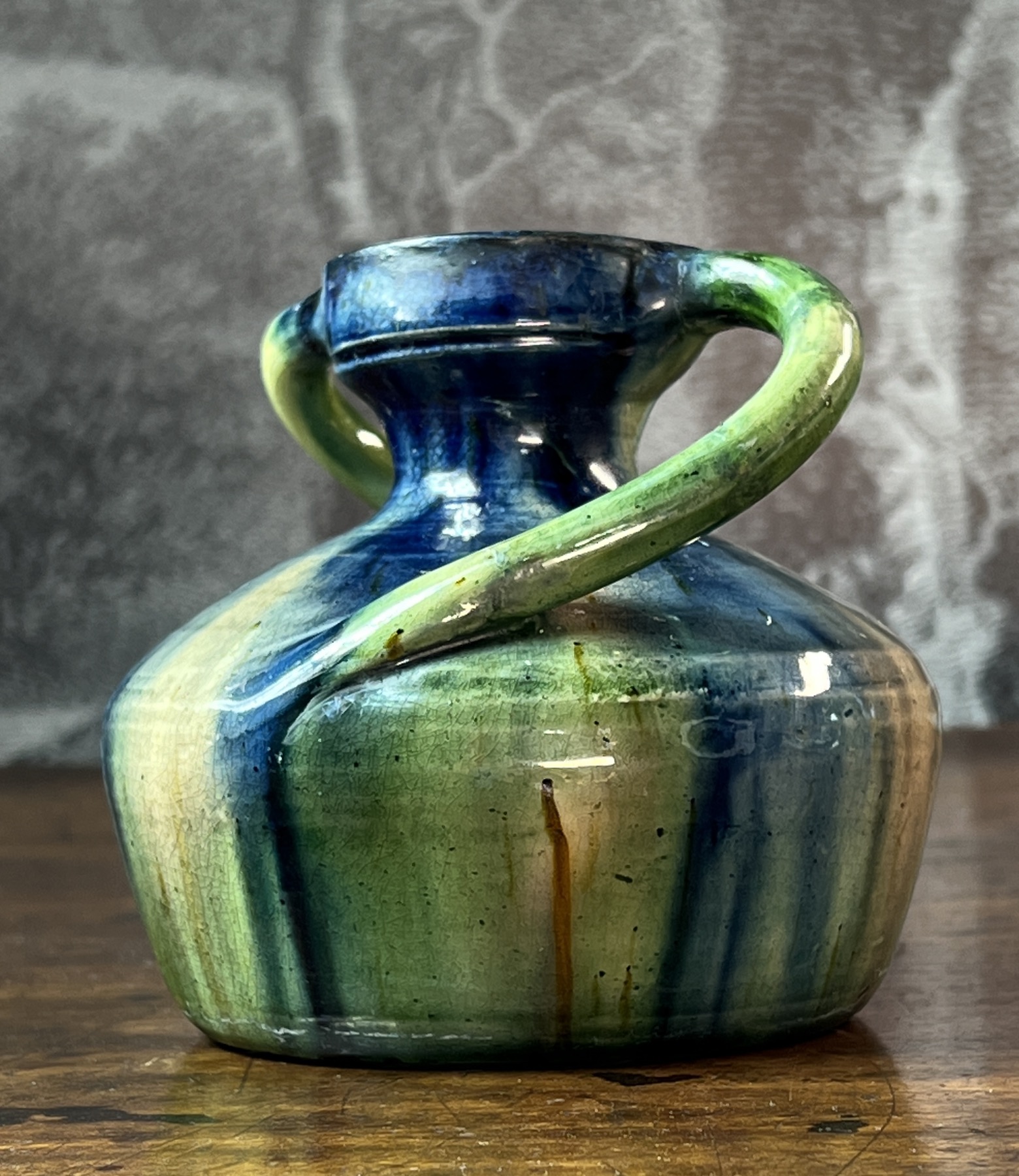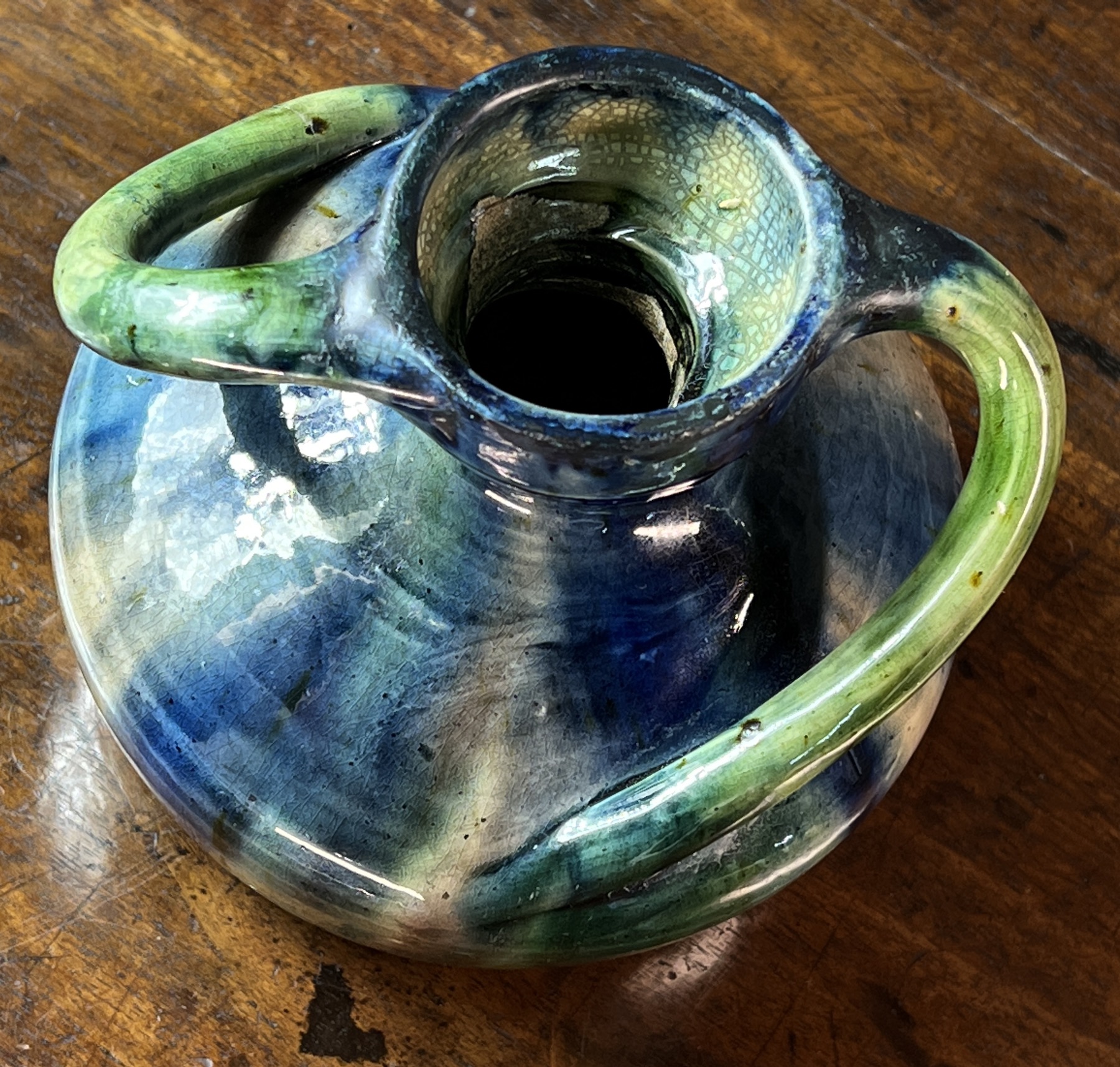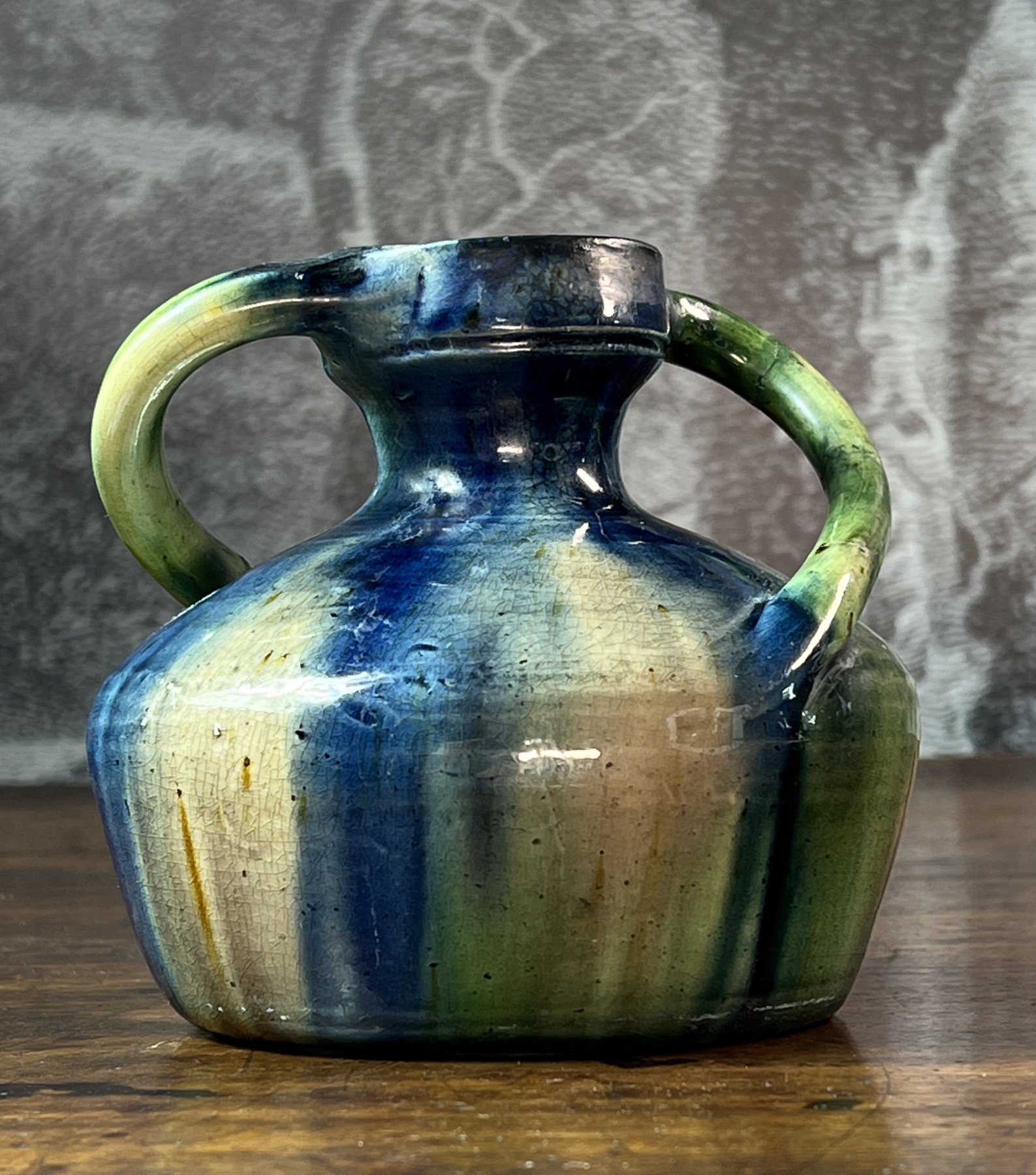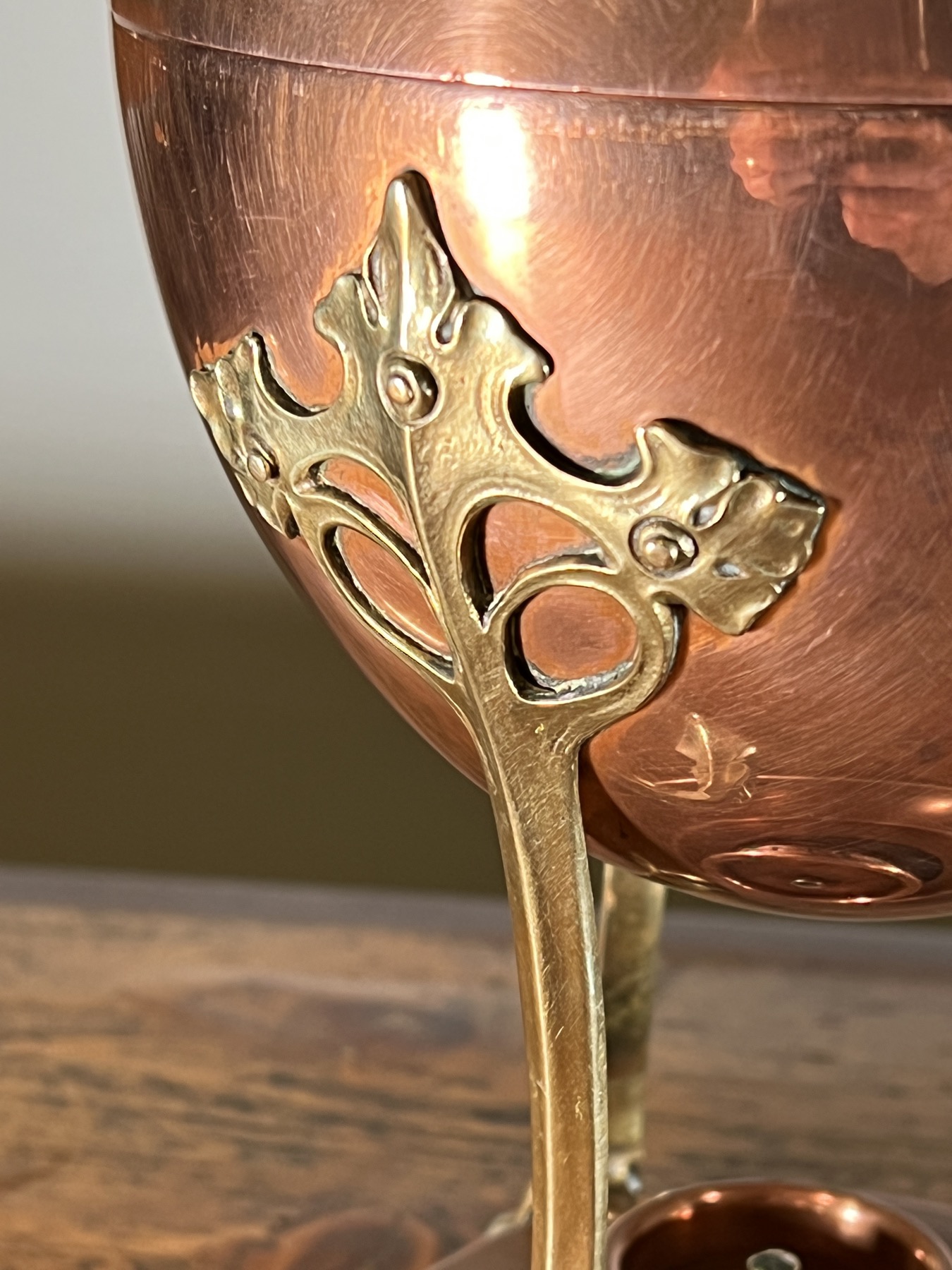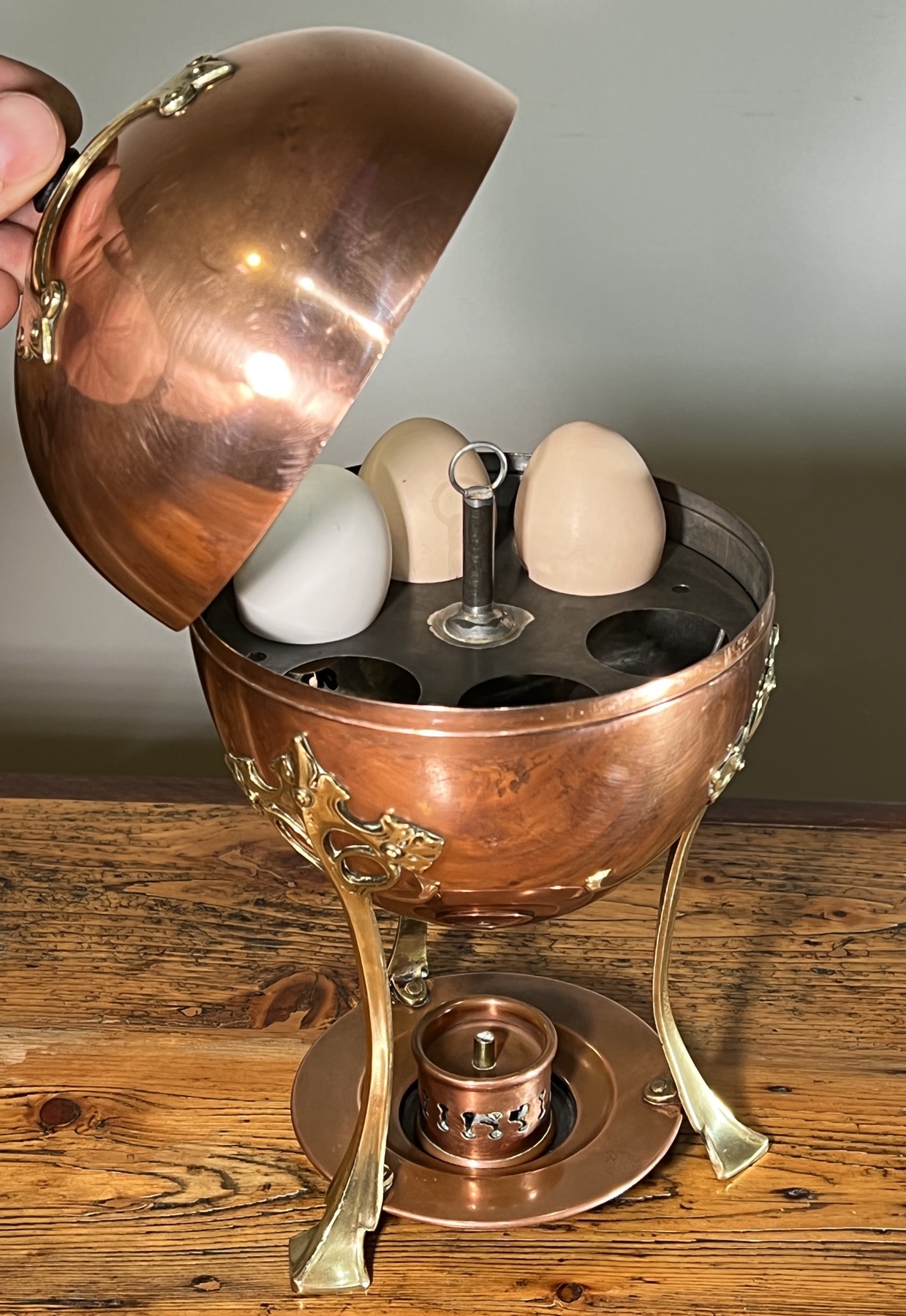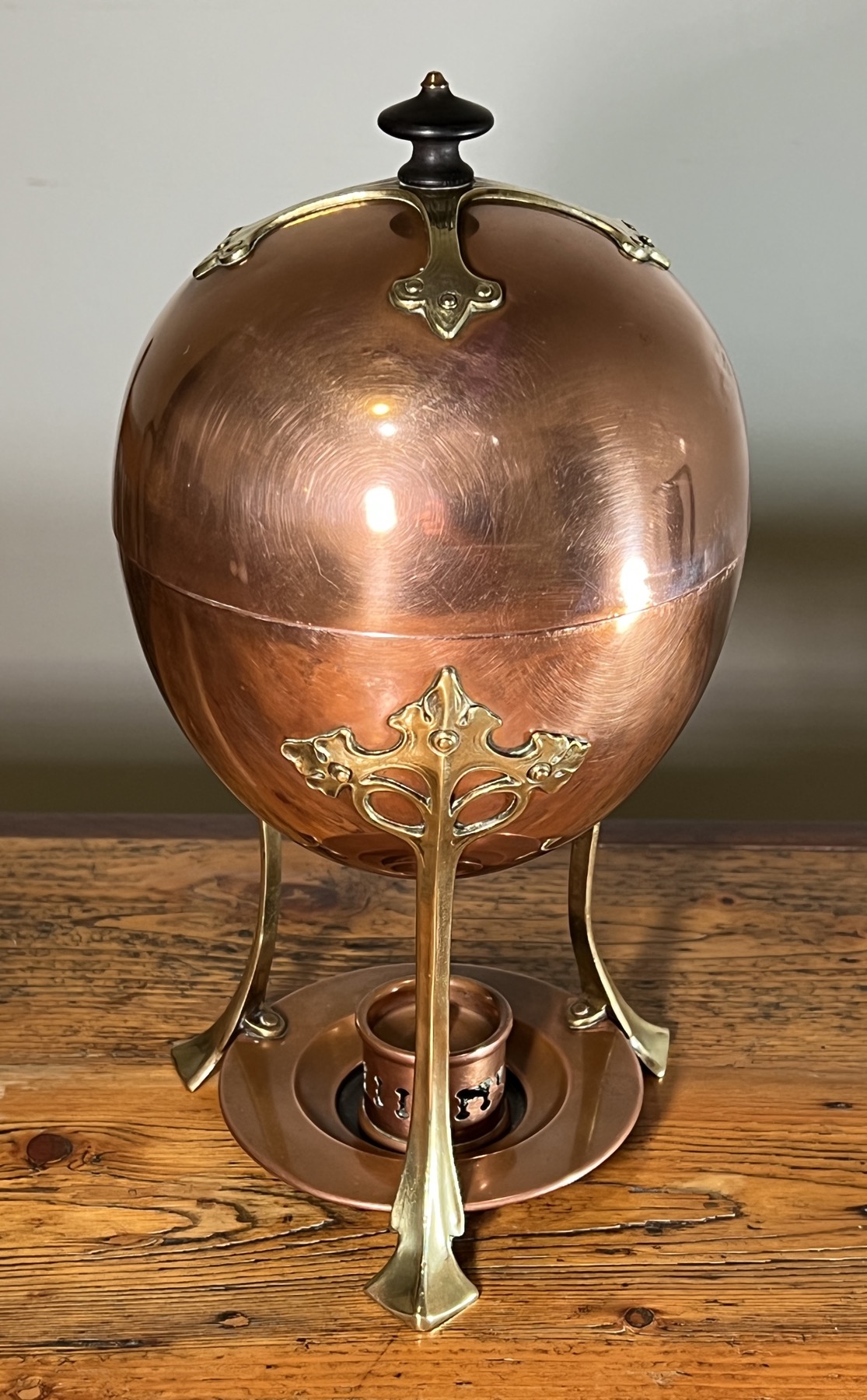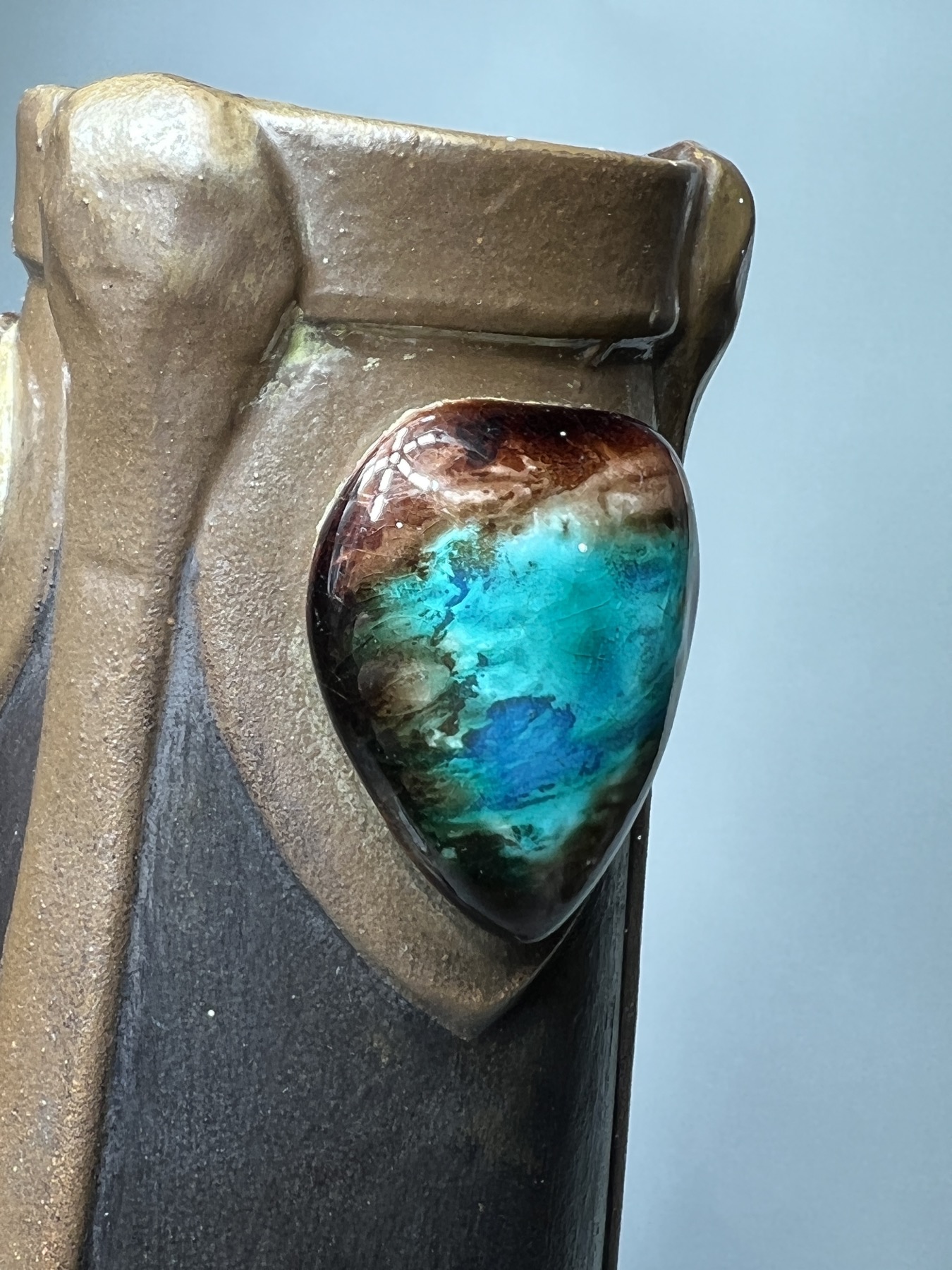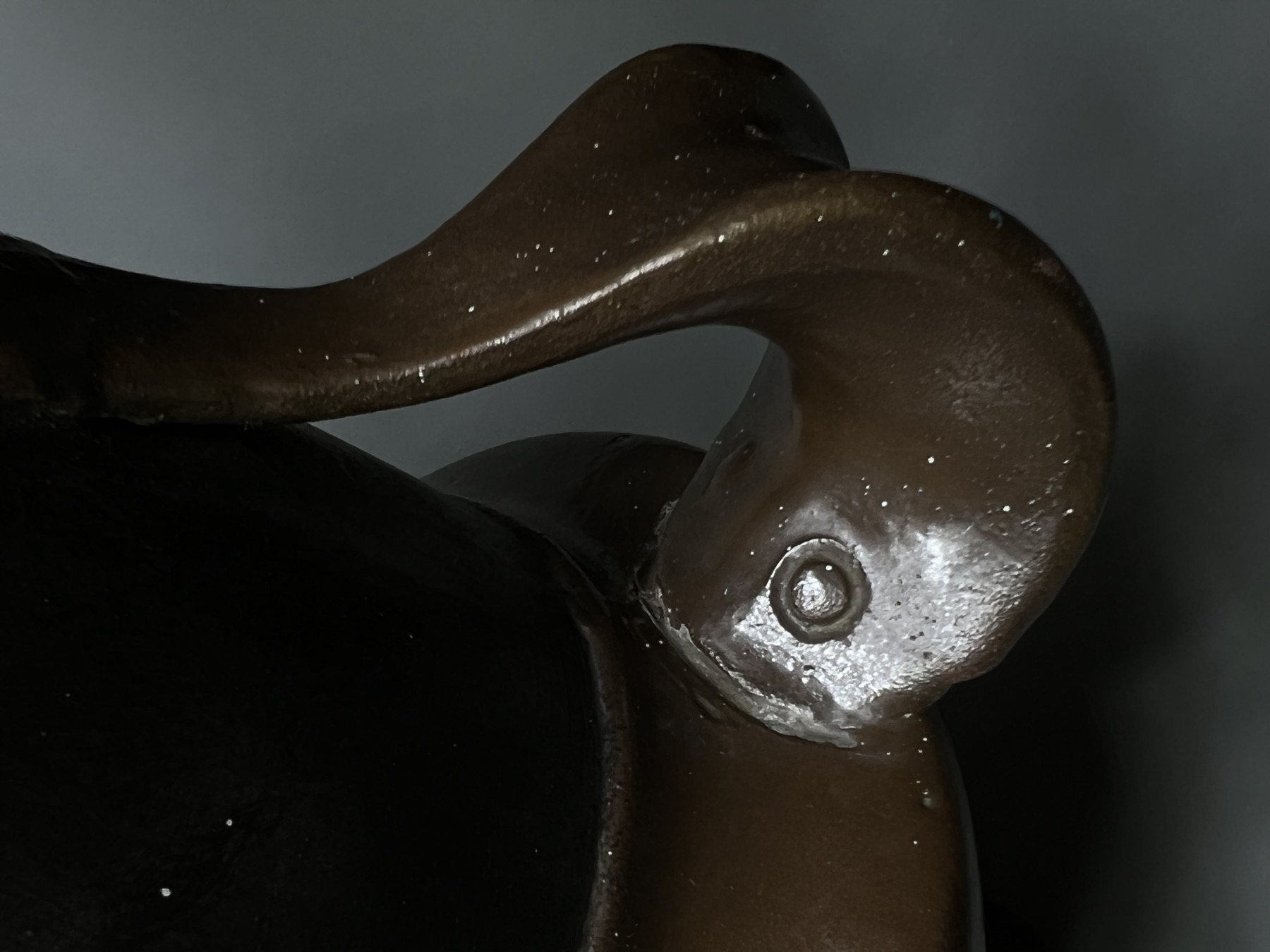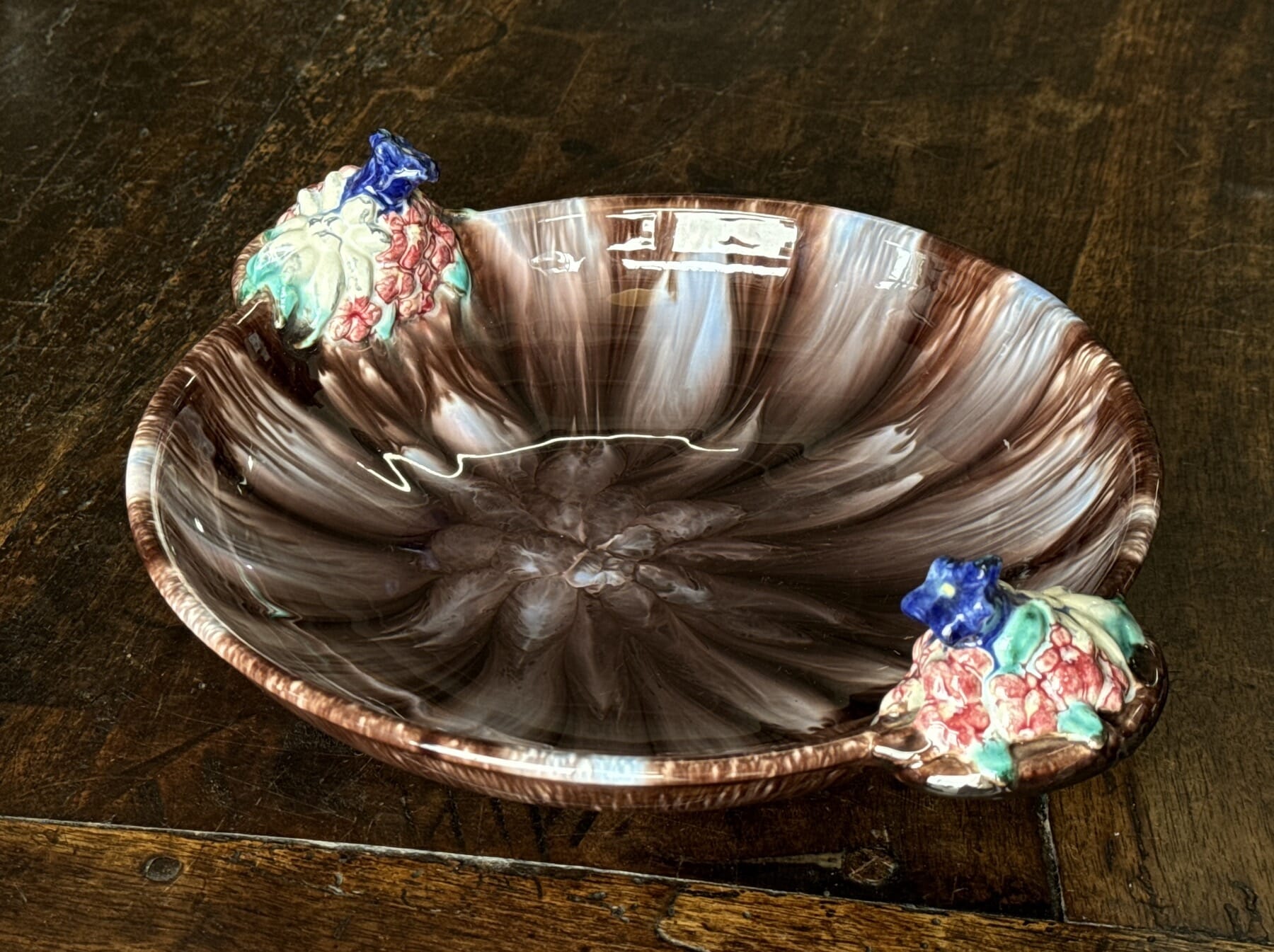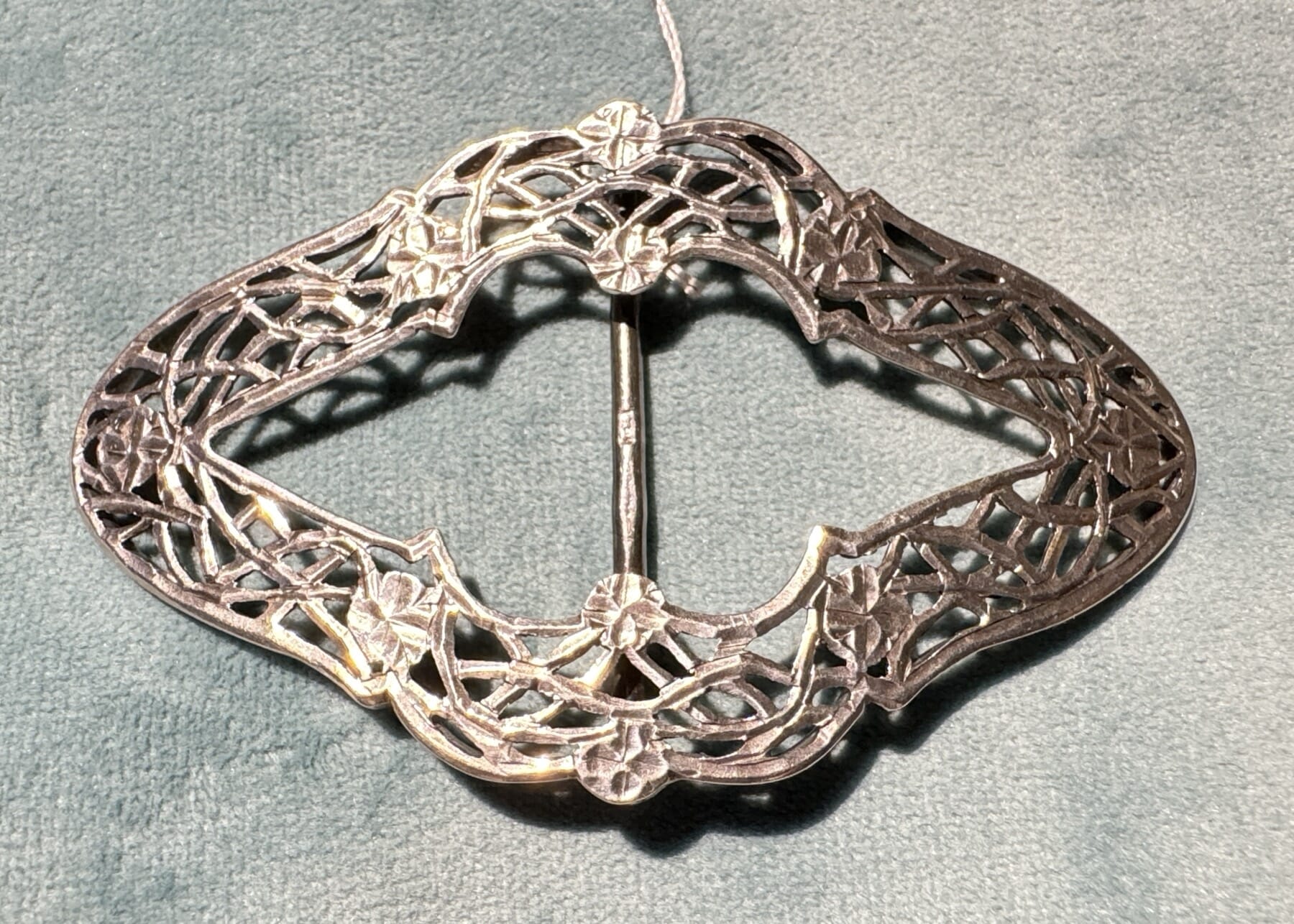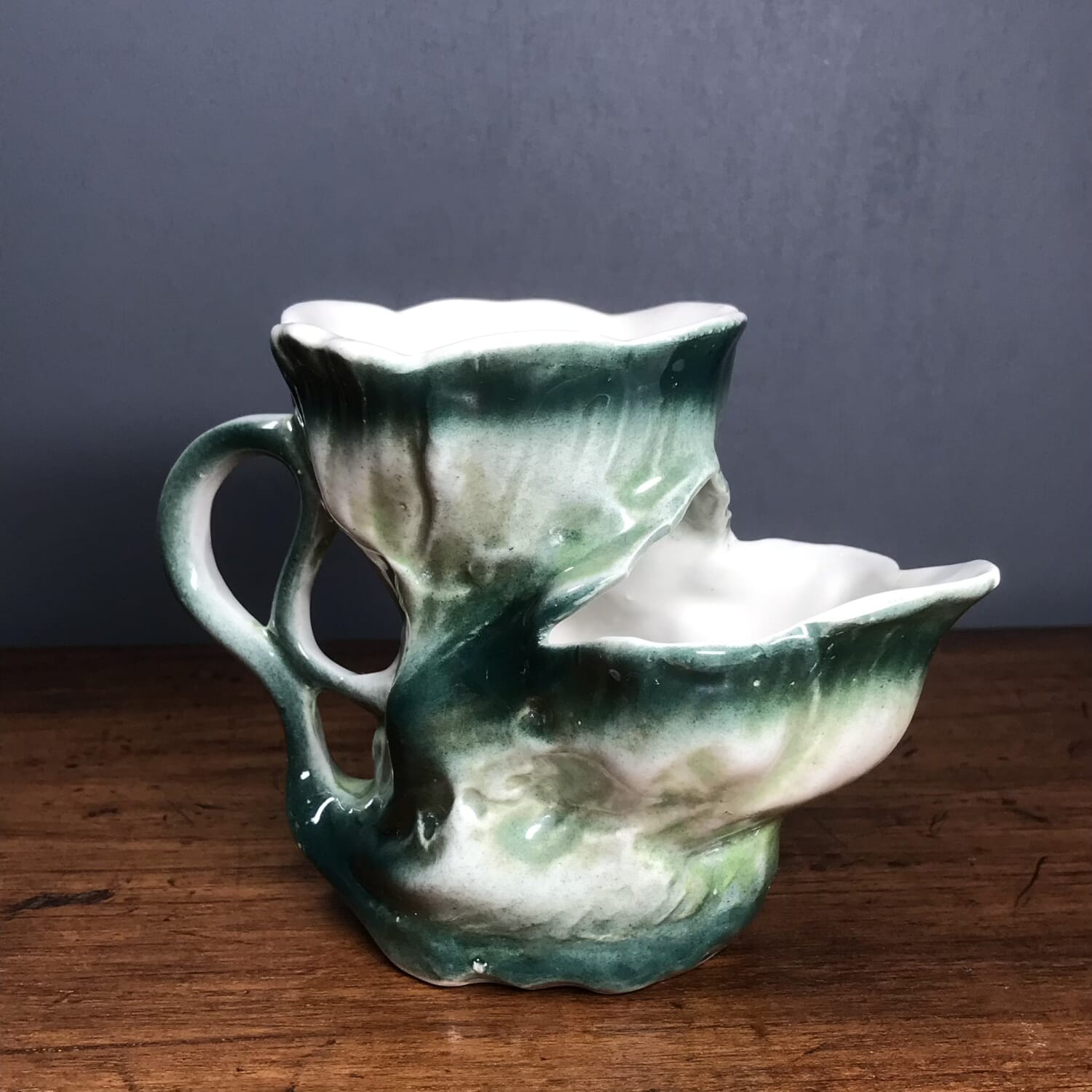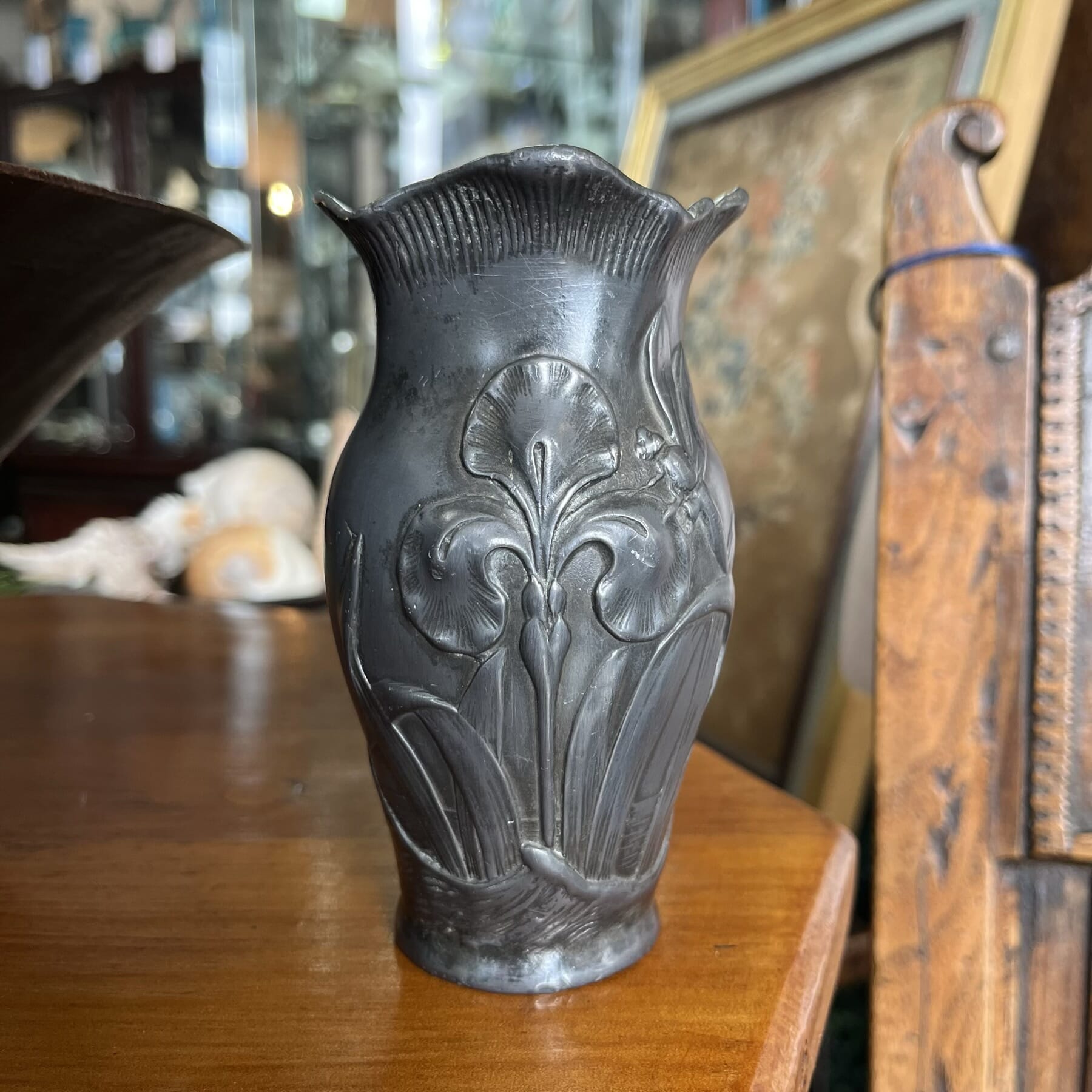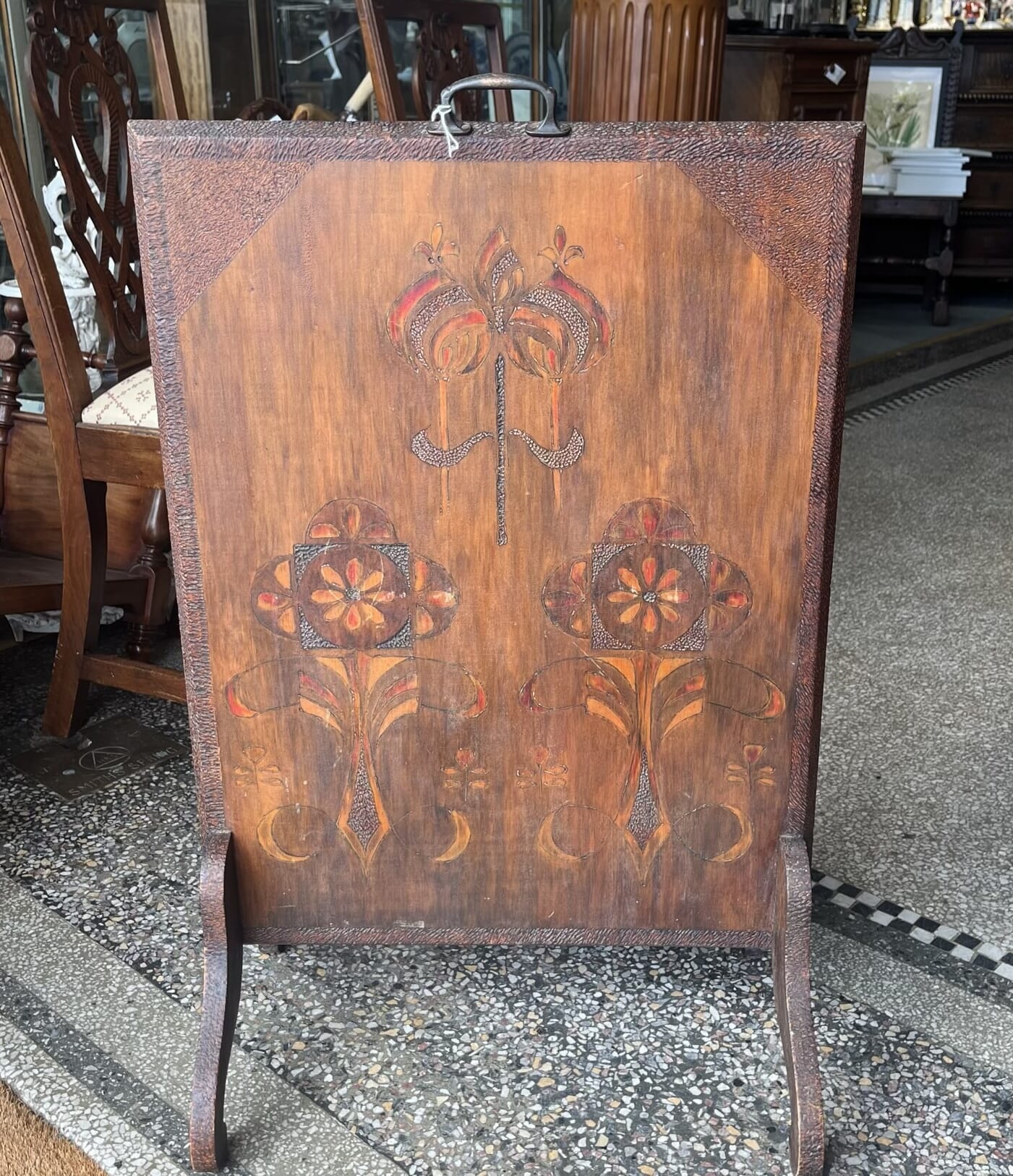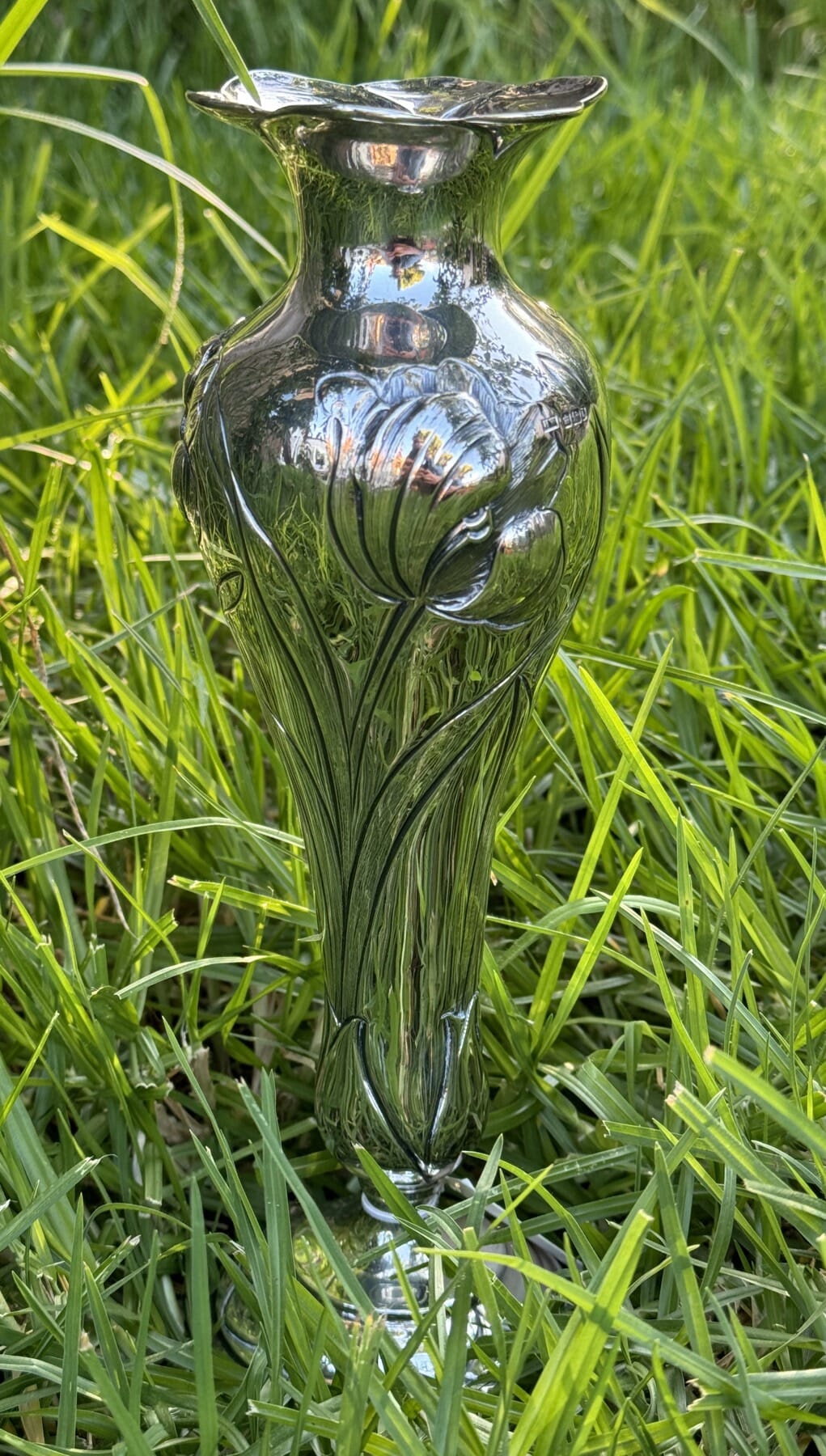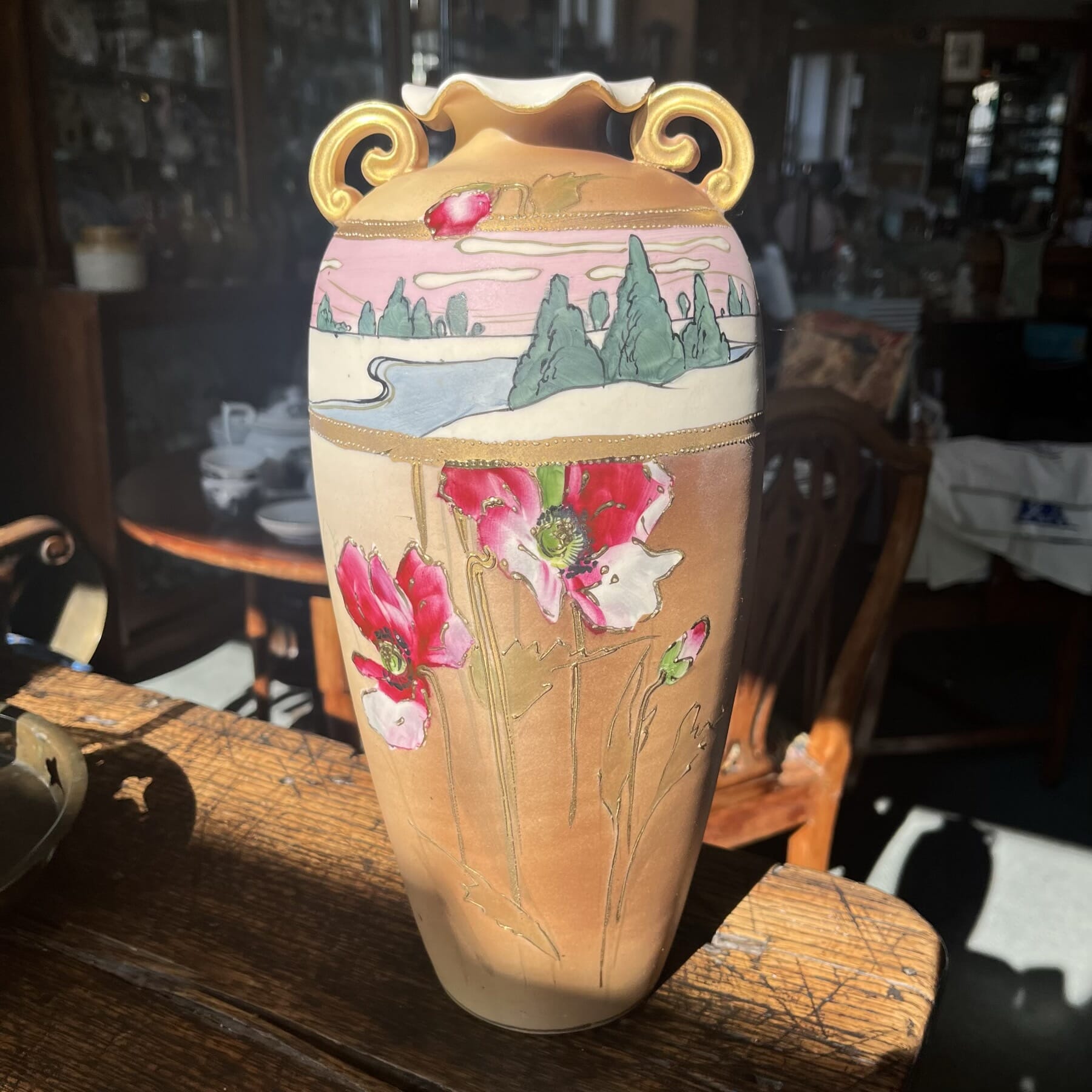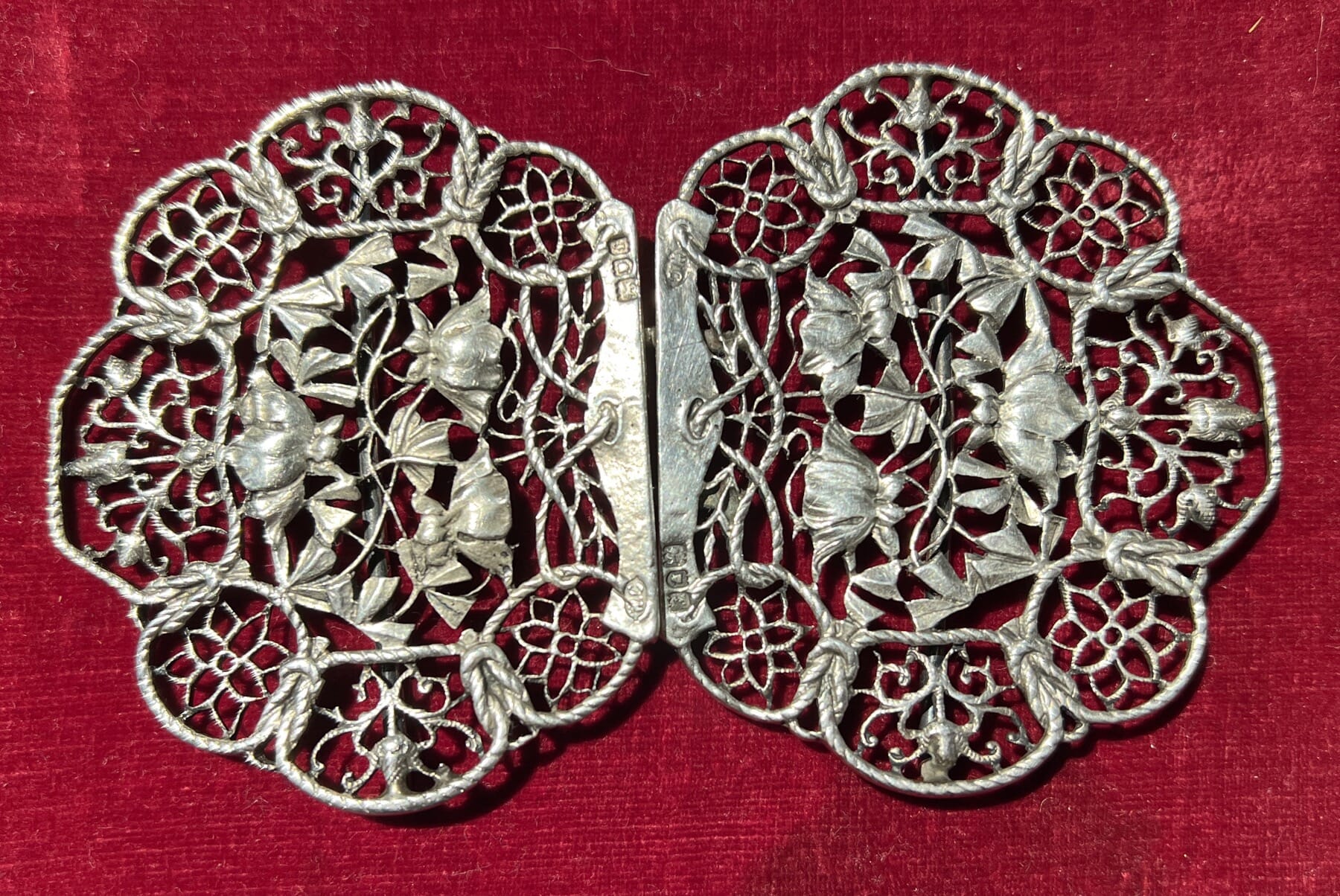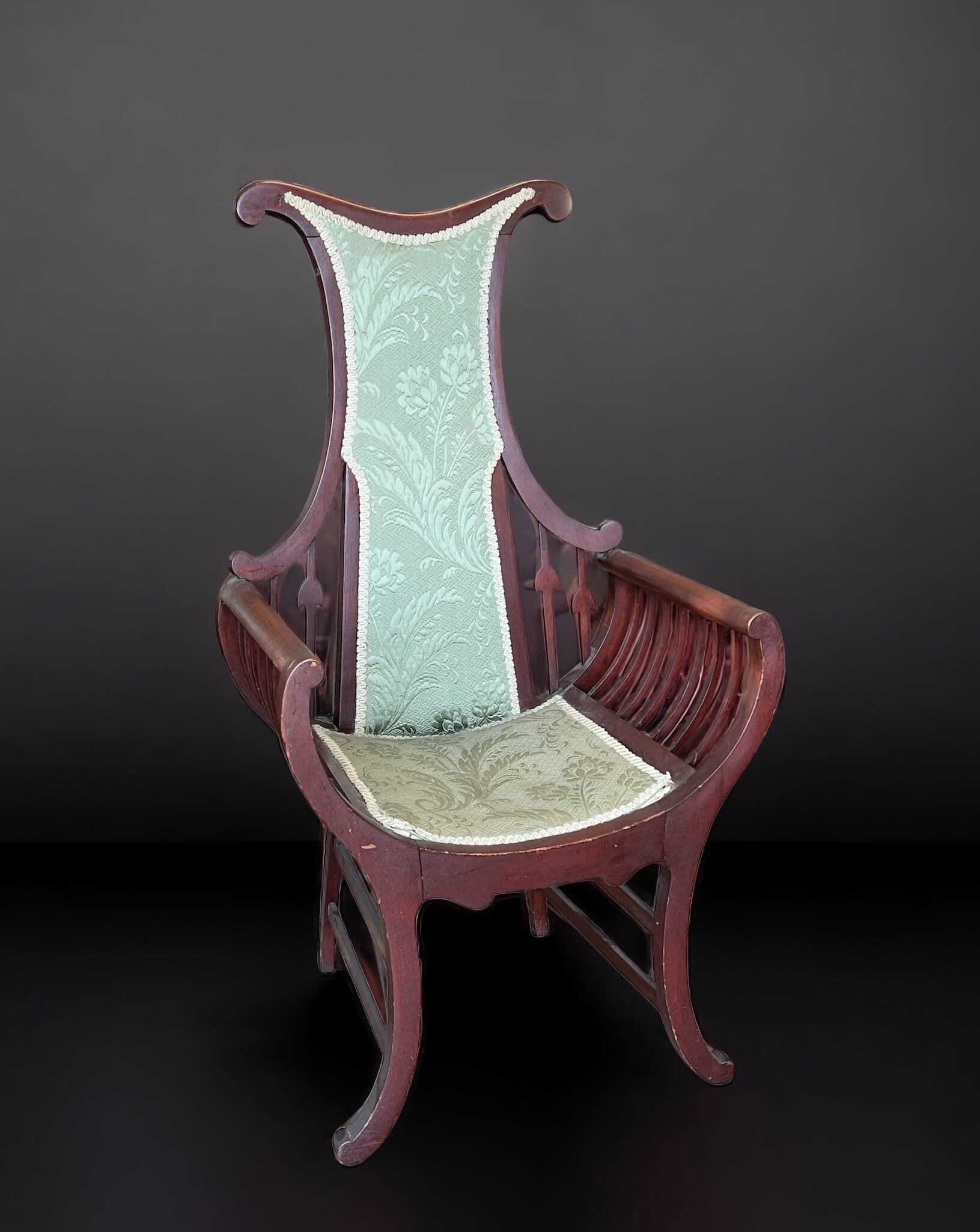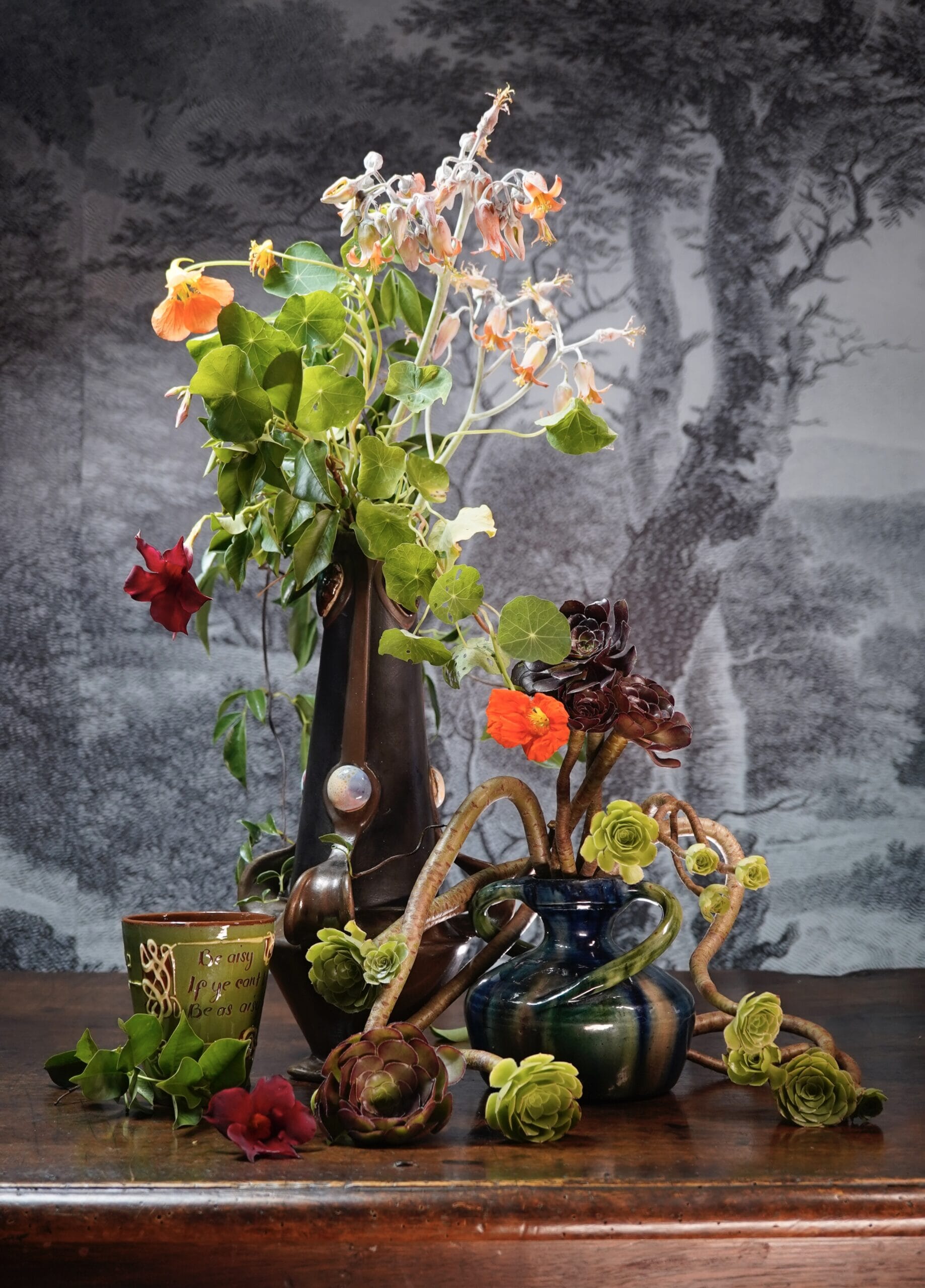
Fresh to Moorabool…
The Fresh Designs!
Art Nouveau is literally a ‘New Art’.
This stylish fashion emerged from France in the latter 19th century. It was a reaction to the re-hashed Classical and Rococo style that dominated European fashion in the 19th century. It is well illustrated by this superb Art Nouveau ‘stamp box’ in French silver & wood, with sensual flowing tendrils, like hair ringlets or organic growing plants.
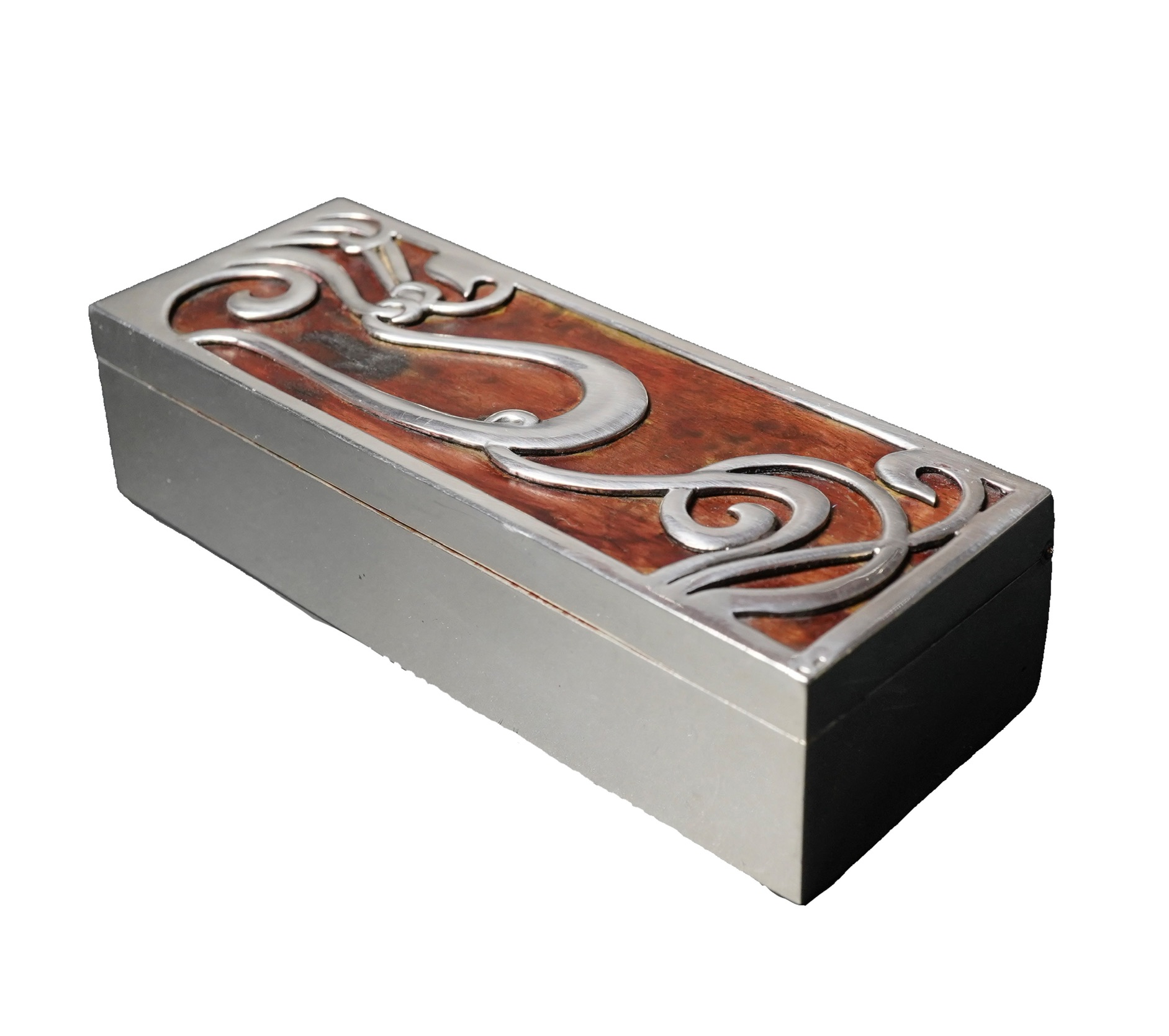
Art Pottery flourished in the late 19th/early 20th century, and embraced the ideals of the Art Nouveau movement. This vase, from Belgium, has spiraling arms that look like they grew….
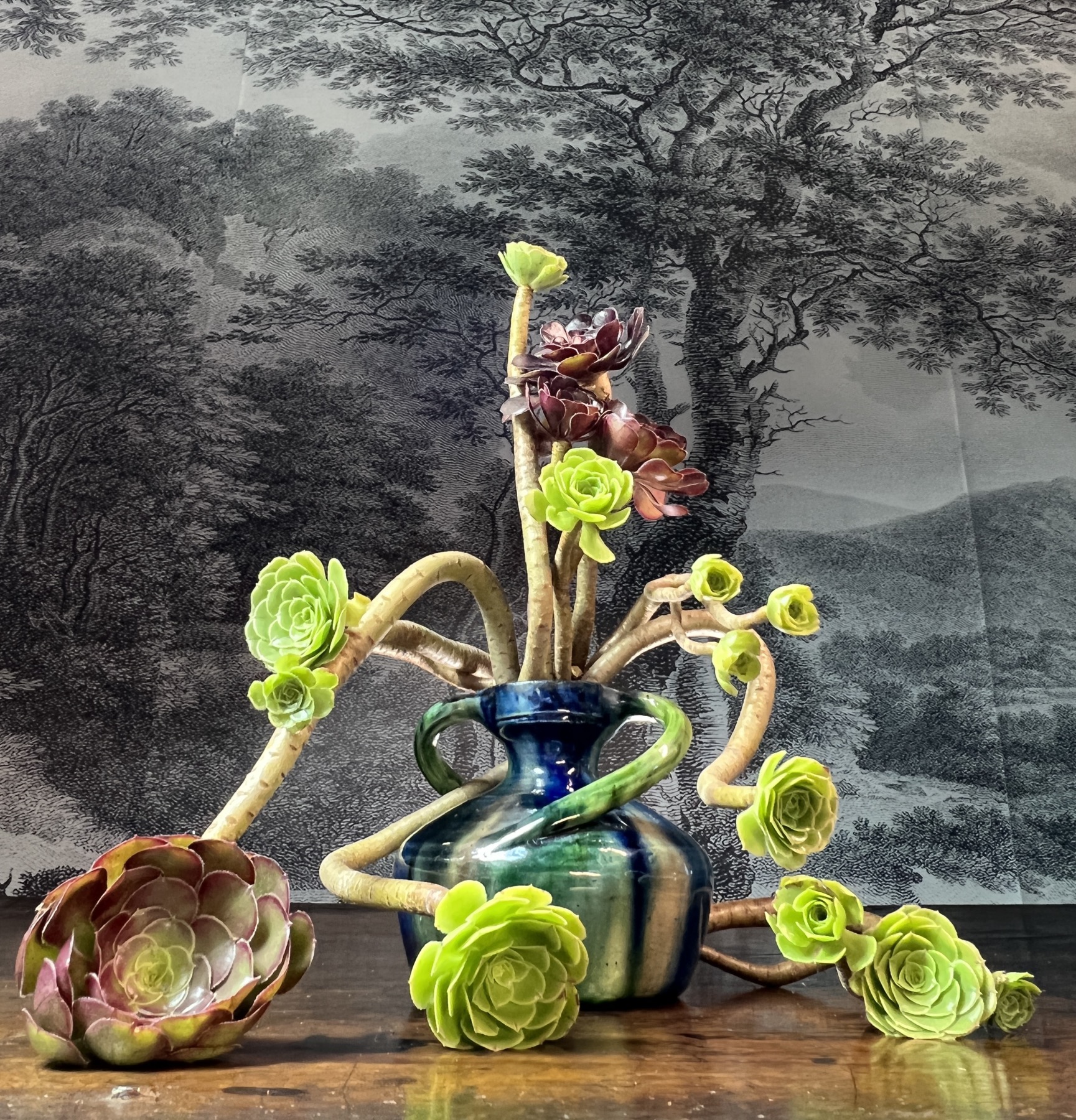
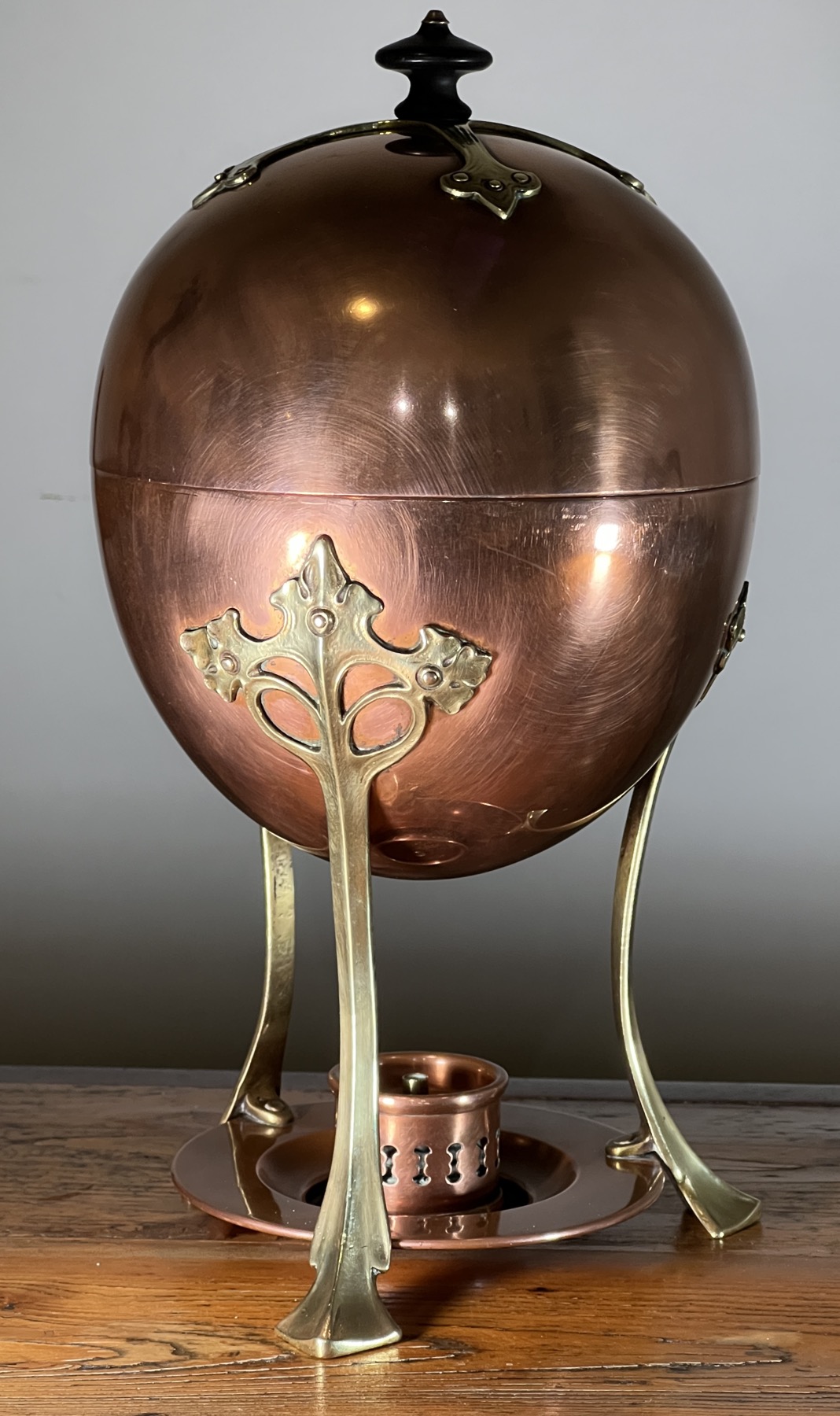
There’s another offshoot from Art Nouveau, originating in Austria and Germany, called ‘Jugendstil’ – literally ‘Youth Style’. This introduced more geometric elements alongside the Nouveau’s organic elements.
This wonderful piece of design comes from the Würtemburgische Metallwaren Fabrik, WMF for short – a German manufacturer of high esteem. The egg-shaped copper body holds 6 eggs inside, which can be warmed with the small spirit burner placed on the platform between the legs. The supports are cast brass with stylish leaf-motif ends, and the legs are basically leaf-stems. The lid has a cross-form support, very geometric and not at all Art Nouveau, making it a fine example of Jugendstil.

In the same theme is this remarkable vase. English pottery, it was made at Bretby, circa 1910. White having some Nouveau elements in its form (the handles have eyes!), it also has a geometry to it that shows the Jugendstil influence – as well as the definite ‘Arts & Crafts’ idea of showing the raw materials & craftsmanship. In this case, it is deceptive, as the ‘copper’ finish is a glaze – and the ‘gemstones’ are also glazed pottery, made separately and attached!
Another interesting off-shoot looks to the Celtic world for inspiration. The Celtic Knot patterns, found on carvings and metalworks from 1st millenium BC European artifacts were well known in Britain, where the style flourished particularly in Scotland, Ireland and Wales. As part of the Arts & Crafts movement, these ancient designs were sometimes referred to by craftsmen, and the beaker below is one such piece.
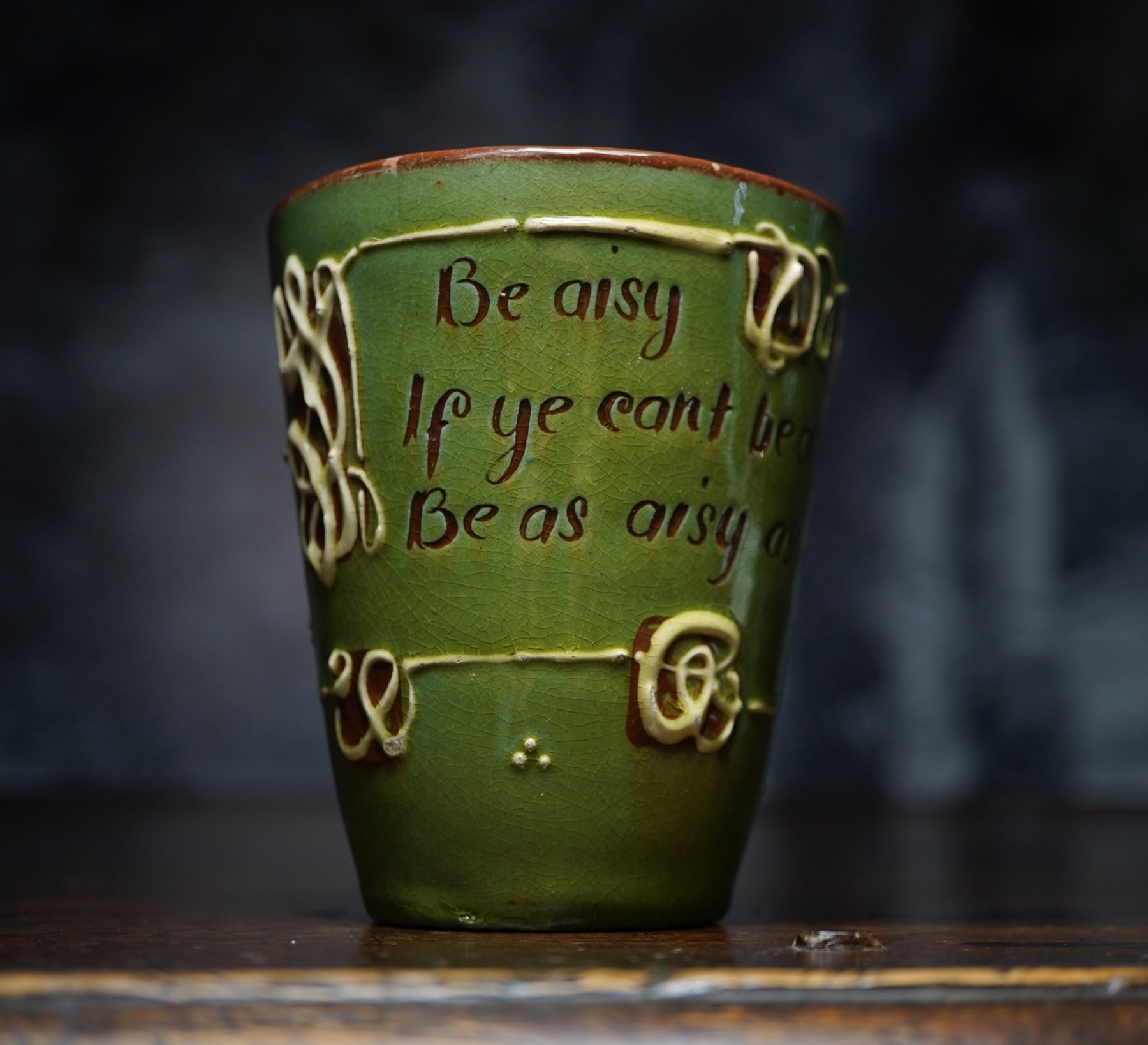
Brannam of Barnstaple, 1903 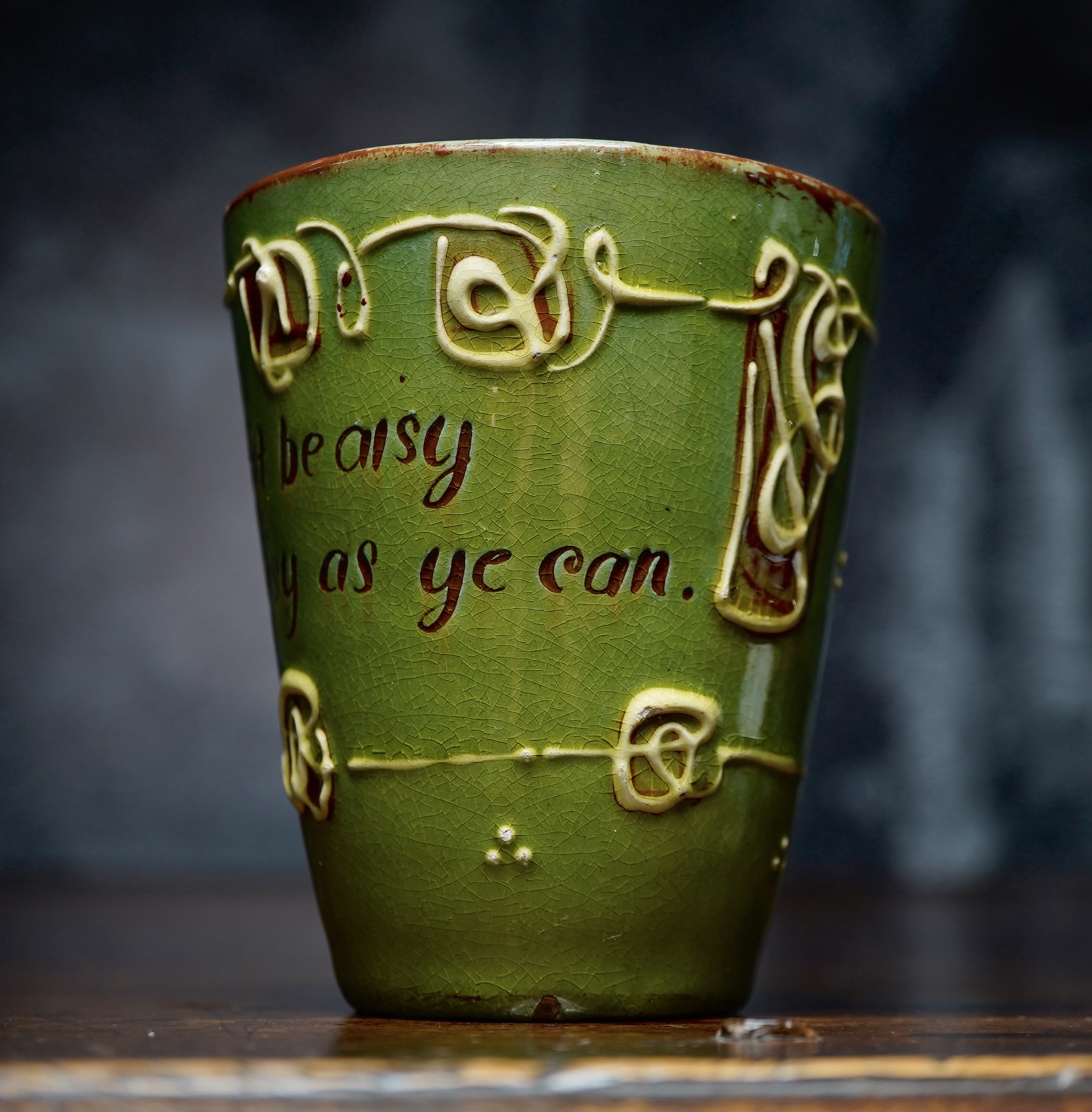
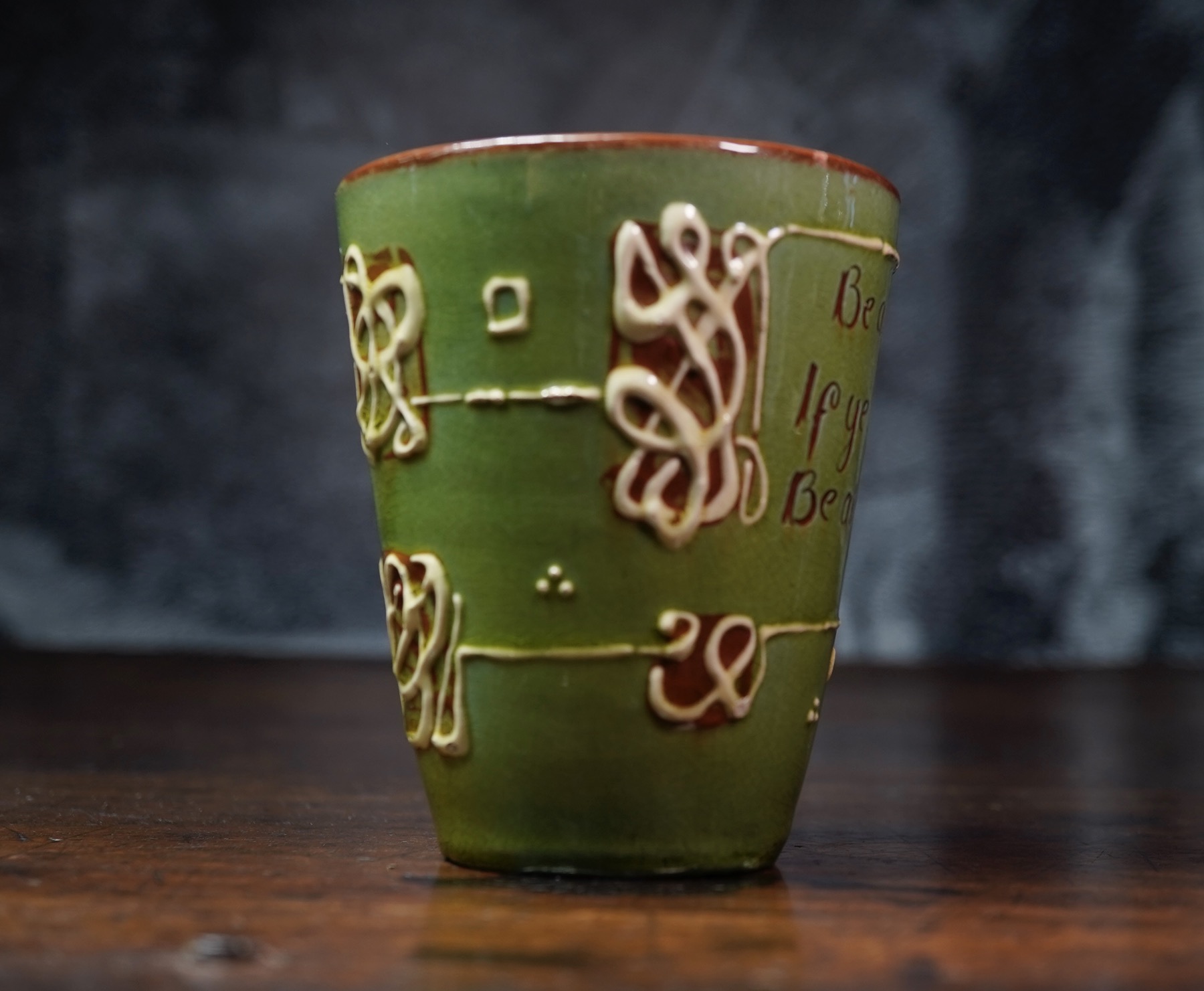
Made at the Art Pottery works of Brannam in Barnstaple, it is decorated with two bands of pale clay in raised slip trails skillfully arranged into ‘Celtic’ knotwork, framing an amusing verse neatly incised through the green glaze in a method we call ‘sgrafitto’:
” Be aisy
If ye cant be aisy
Be as aisy as ye can”
This information is Brannam delightfully easy to describe, as they clearly inscribed it all on the base – ‘Brannam / Barnstaple / 1903’. It is also initialed ‘FB’ for the potter, Frederick Braddon, who quite possibly used the traditional potter’s method of drawing with clay slip – a cow’s horn with the tip cut off, allowing the pale slip inside to be applied in a controlled line.
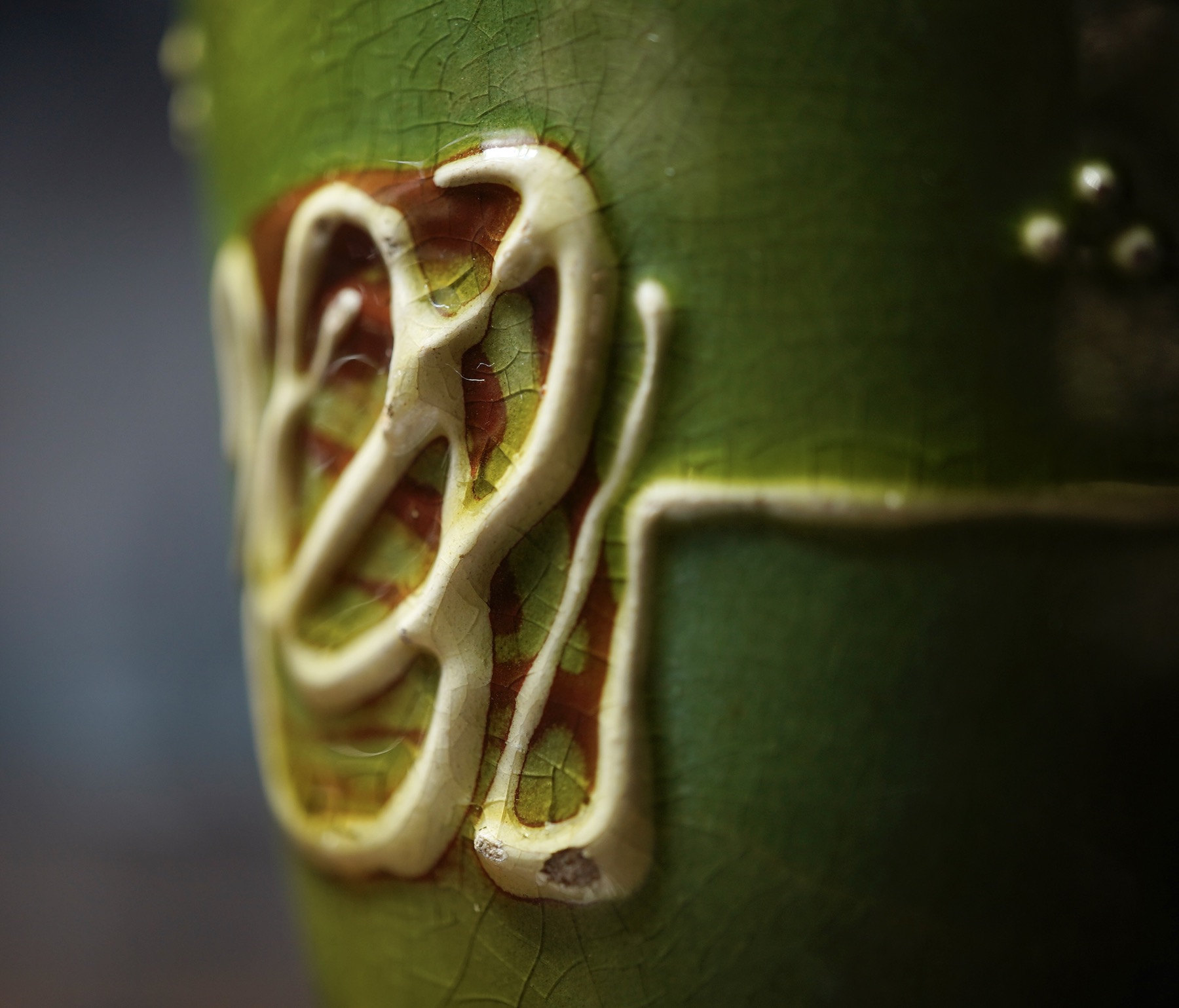
It’s a wonderfully organic result, like the tendrils of a vine growing across the surface.
It therefore fits the definition of ‘Art Nouveau’ – in an Arts & Crafts / Art Pottery manner!
Some Art Nouveau in our stock
-
 Osterra Edel-Keramik Secessionist pottery bowl, mid-20th c.$135.00 AUD
Osterra Edel-Keramik Secessionist pottery bowl, mid-20th c.$135.00 AUD -
 Sterling Silver Arts & Crafts buckle, Art Nouveau flowers, c. 1895$465.00 AUD
Sterling Silver Arts & Crafts buckle, Art Nouveau flowers, c. 1895$465.00 AUD -
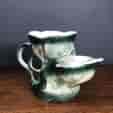 Art Nouveau porcelain shaving mug, organic form & green lustre, c.1905$85.00 AUD
Art Nouveau porcelain shaving mug, organic form & green lustre, c.1905$85.00 AUD -
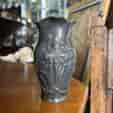 Art Nouveau Pewter vase, Irises, Continental c. 1905$75.00 AUD
Art Nouveau Pewter vase, Irises, Continental c. 1905$75.00 AUD -
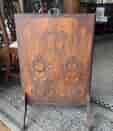 Pokerwork Art nouveau fire screen, C. 1910Sold
Pokerwork Art nouveau fire screen, C. 1910Sold -
 Sterling Silver Art Nouveau ‘Tulip’ vase, Sheffield 1903$580.00 AUD
Sterling Silver Art Nouveau ‘Tulip’ vase, Sheffield 1903$580.00 AUD -
 Austrian secessionist vase with poppies and landscape on blush ground, c.1910Sold
Austrian secessionist vase with poppies and landscape on blush ground, c.1910Sold -
 Superb Sterling Silver buckle, Art Nouveau ‘Poppies’ openwork, William Comyns 1901$860.00 AUD
Superb Sterling Silver buckle, Art Nouveau ‘Poppies’ openwork, William Comyns 1901$860.00 AUD -
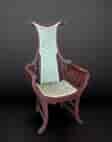 Stylish Australian Art Nouveau Armchair, Lyre back, c. 1905$645.00 AUD
Stylish Australian Art Nouveau Armchair, Lyre back, c. 1905$645.00 AUD

